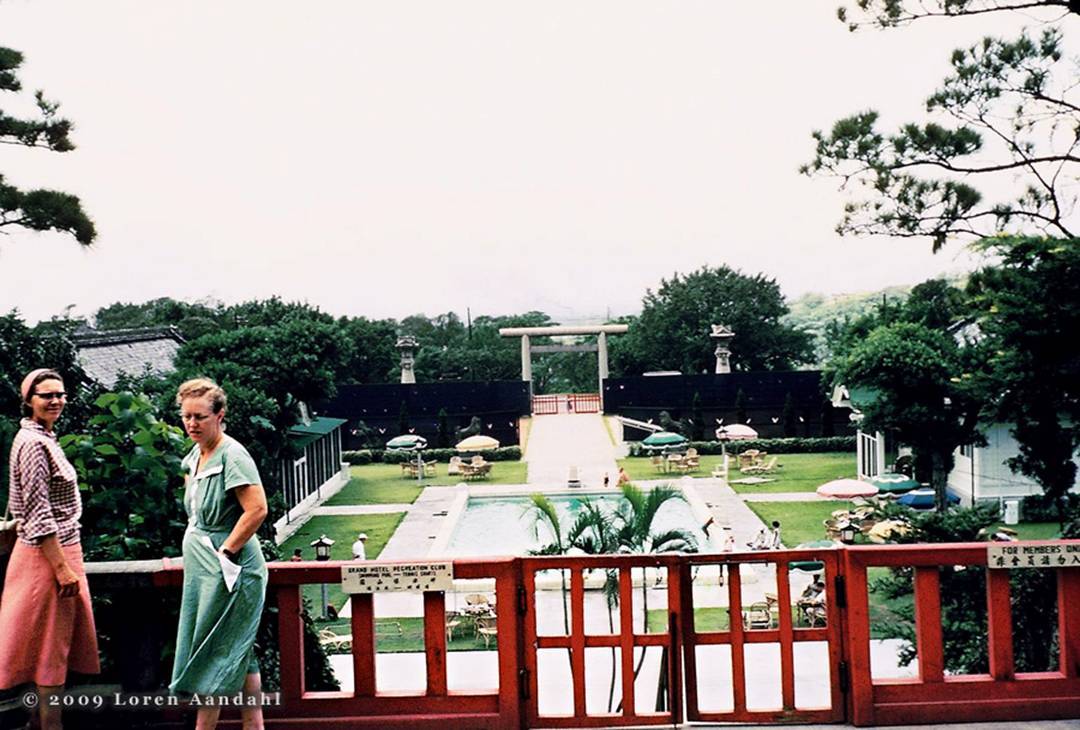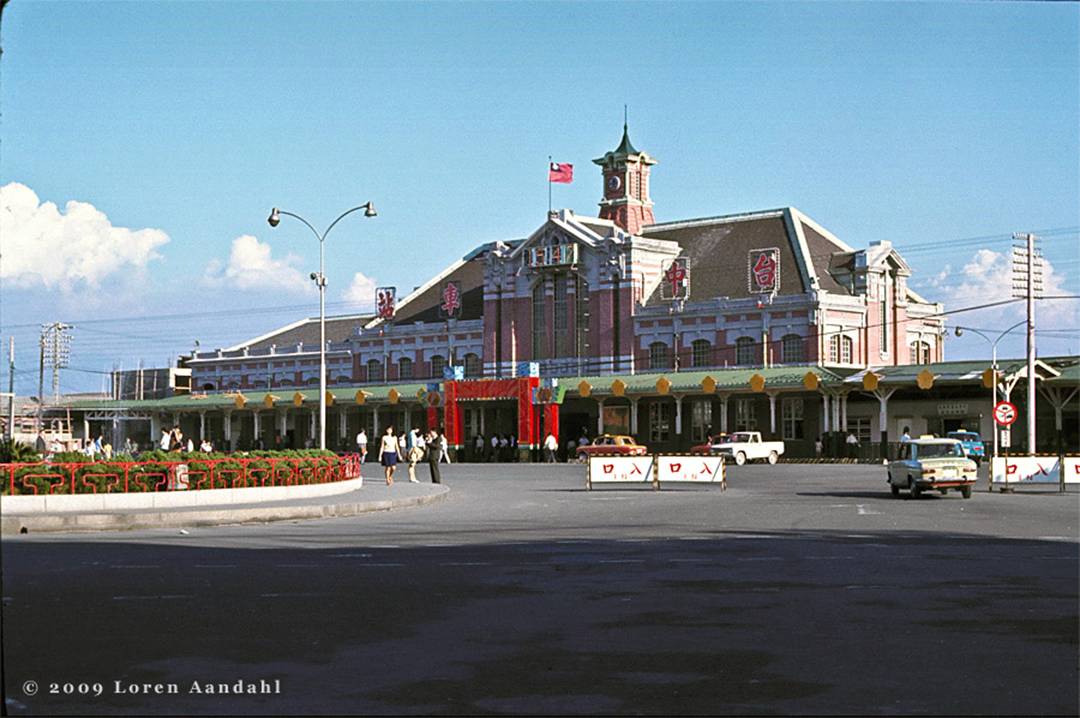|
TAIPEI AIR STATION |

|
The main Japanese Shinto temple complex on Taiwan was in northwestern Taipei city at the end of Chung Shan North Road (not far from the major MAAG complex) just beyond where it crossed the Keelung River. After World War Two, the Nationalist Chinese tore down this complex and built a hotel called the Grand Hotel. However, the Japanese Torii gate survived. In this photograph taken by my father in c.1955, the Torii gate is shown in the foreground while in the background is the new hotel. I wonder who was the lucky driver of the roadster parked to the right of the photograph? |

|
Taken from the front of the Grand Hotel and looking out over the swimming pool, the Japanese Torii gate frames the city of Taipei behind it. To its sides, there appear to be two surviving tall Japanese lanterns as well. My mother, Ruth Aandahl, and another American missionary are shown in the foreground. Photograph c.1955. |

|
No Japanese remnants are in this photograph, c.1955, showing my mother, Ruth Aandahl, and another American missionary outside the front door of the Grand Hotel in Taipei. Note the very elaborate and colorful entryway and the intricate carvings on the concrete side of the hotel. In the background is one of the ubiquitous Army jeeps that seemed to be everywhere in Taiwan in the 1950s. This original Grand Hotel building was torn down in the late 1960s or early 1970s and a much larger hotel was constructed that remains to this day. |

|
When Taiwan became a Japanese colony in 1895, the railway built on Taiwan by the previous Taiwan provincial government had only recently been completed from the port of Keelung in the north through Taipei to the city of Hsinchu, a distance of 107 kilometers. It was necessary for the Japanese to rebuild most of this line with several deviations, reduced curvatures and gradients and improved bridges and tunnels prior to completing the north-south railway to Kaohsiung which opened throughout in 1908. Along this mainline, the Japanese constructed beautiful stations in the seven main cities (Japanese names in parenthesis); Keelung (Kirin), Taipei (Taihoku), Hsinchu (Shinchiku), Taichung (Taichu), Chiayi (Kagi), Tainan (Tainan) and Kaohsiung (Takao). This photograph, taken by Loren Aandahl in October 1969, shows the magnificent Taichung station which was completed in 1918. It is built to the Meiji-era architectural style so widely used in Taiwan for all major government buildings. The station building is decorated here for the Nationalist Chinese celebration of the founding of their Republic of China in 1911 which occurred on the 10th day of the 10th month and usually referred to as the "Double Tenth" holiday. |